 Amazon.com let slip the details of the latest Canon, which thanks to this thread over at Fred Miranda, we can now peruse:
Amazon.com let slip the details of the latest Canon, which thanks to this thread over at Fred Miranda, we can now peruse:
Canon EOS 1Ds Mark III 21.1MP Digital SLR Camera (Body Only)
Price: $7,999.99
Product Features and Technical Details
Product Features
* 21.1-megapixel full-frame CMOS sensor
* Large 3.0-inch LCD display with Live View and seven brightness settings
* 5 fps at shutter speeds 1/500 second or faster (for bursts of up to 45 Large/Fine JPEGs or 15 RAW images)
* sRAW mode; 35-zone metering system; 45-point AF; integrated Self-Cleaning Sensor Unit
* Powered by LP-E4 lithium-ion battery pack; stores images on CF, SD, or some SDHC memory cards
Technical Details
* Effective resolution: Approximately 21.1 million pixels (total pixels: approximately 21.9 million)
* Recording pixels: 5616 x 3744
* Sensor type: Full-frame CMOS sensor, with primary R-G-B filtration (28 x 18.7 millimeters)
* Pixel size: 6.4 microns square
* Lens focal length factor: None (1x)
* Imaging processor: Dual DIGIC III image processors
* Maximum frames per second: 5 frames per second (fps) at shutter speeds 1/500 second or faster, in all recording modes
* Drive modes: Single; silent (single-frame); high-speed continuous (5 fps; adjustable 5 to 2 fps); low-speed continuous (3 fps; adjustable 4 to 1 fps)
* Maximum number of frames / burst: JPEG: 45 (full-resolution, Level-8 fine compression); RAW: 15; RAW plus JPEG: TBA
* Flash sync speed: Up to 1/250, with EX-series Speedlites
* Shutter "lag" time: Approximately 55 milliseconds (from half-way to fully depressing shutter button)
* Start-up time: 0.15 seconds
* Image type: JPEG, RAW (14 bit); improved A/D conversion to 14-bit processing for 16,384 individual tones
* Highlight tone priority: Improve tonal range in highlight areas by approximately 1 stop (C.Fn II-2)
* Noise reduction: Long exposures 1 second and longer (C.Fn II-1); high-speed ISO images (C.Fn II-2)
* Storage media: Compatible with two card slots and external storage media; CompactFlash (Type I or II, including MicroDrives); SD card slot (SDHC-compatible for 2GB higher SD cards); USB external hard drives (requires optional WFT-E2A wireless transmitter)
* Recording options: Multiple media recording options: record to only one memory card; record the same image to both SD and CF card; record RAW image to a CF card and JPEG image to a SD card
* New additional features: Files can be automatically written to another media if card beomes full; select different image sizes and save to different media (example: different JPEG sizes); record same image using all three media options, including external hard drive; copy files manually from one card to another, or to connected USB hard drive
* Image format options: JPEG (compression adjustable in 10 steps on menu); RAW ("CR2" RAW file format); RAW + JPEG (selectable on rear LCD panel); sRAW ("CR2" small RAW file format; 1 /4 file size of full-resolution RAW, approximately 5.2 megapixels)
* Resolution options: Large: 5616 x 3744 (approximately 21.0 million pixels); "Medium 1": 4992 x 3328 (approximately 16.6 million pixels); "Medium 2": 4080 x 2720 (approximately 11.0 million pixels); "Small": 2784 x 1856 (approximately 5.2 million pixels); "RAW": 5616 x 3744 (approximately 21.0 million pixels); "sRAW": 2784 x 1856 (approximately 5.2 million pixels)
* Data recording format: DCF 2.0 and EXIF 2.21; EXIF 2.21--applies "Adobe 1998 RGB" color space tag to images
* Sound recording: Maximum 30 seconds per sound clip (more than one clip can be assigned to each image)
* Folder settings: Create new folder and select on memory card
* 3-part approach to dust reduction: EOS Integrated Cleaning System; self-cleaning sensor unit--low pass filter in front of the sensor vibrates at a very high frequency for about four seconds to "shake" off loose dust and dirt; occurs on start-up and shut down--can also be activated by user or totally disabled; Dust Delete Data: a test shot is taken and any dust spots are "mapped" and added to each image's text data; automatic removal possible in Canon DPP software; manual: user can lock up mirror to blow off any dust or have service technician wipe sensor clean
* LCD monitor: 3.0-inch (diagonal) TFT color; approximately 100% coverage; approximately 230,000 pixels
* Playback options: Single image; single image with info and histogram; 4-index or 9-index image; magnified zoom display
* Live View type: Electronic viewing of scene, directly off imaging sensor, on LCD monitor
* Coverage: Approximately 100%
* Metering: Real-time evaluative metering (off CMOS imaging sensor)
* Grid display: Two vertical and two horizontal lines; can be turned on or off by user
* Aspect ratio: Masking for 6:6, 3:4, 4:5, 6:7, 10:12, and 5:7
* PC live view: Enabled using EOS Utility (v.2.0) (use computer monitor as viewfinder)
* Shutter speed range: 30 seconds to 1/8000, plus bulb (1/3, 1/2, or full-stop increments when user-set)
* Maximum flash sync speed: 1/250 second
* Anticipated shutter durability: 300,000 exposures
* ISO range: 100 to 1600, in 1/3-stop increments; ISO 50 and 3200 can be added via ISO extension on menu; new ISO safety shift (camera shifts ISO in Tv or Av mode if needed to preserve exposure)
* Exposure modes: Manual, Aperture-priority, Shutter-priority, Program, Bulb
* Metering: 63-zone metering linked to 19 AF points; Evaluative metering (63-zone, linked to active AF point); Center-weighted metering; Partial metering (approximately 8.5% of the picture area); Spot metering (approximately 2.4% of the picture area); Options: Center only; linked to any of 19 AF points; and Multi-spot metering up to 8 readings
* Metering range: EV 0 to 20 (all patterns; at normal temperatures)
* Exposure compensation: Possible in any Auto exposure mode; up to +/- 3 stops, in 1/3-stop increments
* Exposure bracketing: 2, 3, 5, or 7 shots (selectable with C.Fn I-6); up to +/- 3 stops, in 1/3-stop increments; Standard Auto bracketing, via aperture and/or shutter speed
* Compatible flashes: Canon EX-series Speedlites (TTL flash not possible with non-EX speedlites)
* E-TTL II: 63-zone metering with EX-series speedlites; evaluative E-TTL flash metering (can be averaged over all 63 metering zones); distance information now used from compatible Canon EF lenses for flash calculations
* Flash metered manual: Possible with flash in Manual mode, via FEL button
* Flash exposure lock: 2.4% Spot metering of pre-flash illumination
* Flash exposure compensation: Possible on body for certain speedlites (up to +/- 3 stops, in 1/3-stop increments)
* Flash exposure bracketing: Possible with 580EX II, 580EX, 550EX, MR-14EX, and MT-24EX (set on Speedlite)
* Hi-speed flash speed: Possible with EX-series Speedlites, up to 1/8000 second , normal maximum x-sync is 1/300
* PC socket: Standard; sync line voltages up to 250v are OK through PC socket or hot shoe
* Number of AF points: 45 (inside of ellipse area of focus screen); 19 high-precision cross-type points (require f2.8 or faster lens for cross-type coverage); 26 assists points (require f5.6 or faster lens)
* Number of cross-type points: 19 points--any of these can be user-selected with manual AF point selection (high-precision type points; require a f2.8 or faster lens; center point requires f4 or faster)
* Focus modes: One-Shot AF (for stationary subjects); AI Servo AF (for tracking moving subjects)
* Manual AF point selection: 19 AF points ( default); inner 9 AF points (via C.Fn III 9-1); outer 9 AF points ( via C.Fn III 9-2)
* Automatic AF point selection: Possible in both One-shot and AI Servo AF modes
* AF On button: AF button on rear of body executes AF and metering; AE Lock button can switch functions with AF On button via C.Fn IV-2-1
* Viewfinder coverage: 100%, vertically and horizontally
* Eyepoint: 20 millimeters
* Magnification: 0.75x
* Focusing screen: Ec-C IV (new standard focusing screen); interchangeable with Ec-series screens from all previous EOS-1 series cameras
* Diopter: -3 to +1.0 (user-adjustable); further adjustment possible with Eg series diopter lenses
* Mirror lock-up: Possible via C.Fn III-14; new: option to have mirror remain up for multiple pictures, until SET button is pressed
* Eyepiece shutter: Built-in; activated by lever to right of eyepiece
* White Balance modes: Auto (WB is read off of CMOS imaging sensor only); Pre-set (Daylight, Shade, Cloudy Tungsten, Fluorescent, Flash); Custom (reading taken off 18% gray card or white object; up to 5 custom readings can be stored); Color Temperature (range 2500k to 10,000k; 100k increments); Personal WB settings--PC-1 to PC-5 (up to five, created in computer and uploaded into camera)
* White Balance compensation: Alter white balance in amber-blue direction, and/or magenta-green direction +/- 9 levels
* White Balance bracketing: Alter White Balance in amber-blue direction or magenta-green direction, up to 15 mireds
* Picture Style: Allows user to easily adjust the "look" of JPEG images, or RAW files processed with Canon software; six presets: Standard, Portrait, Landscape, Neutral, Monochrome, Faithful; adjustable settings: Sharpening, Contrast, Color Saturation, and Color Tone
* Digital terminal: USB 2.0 Hi-speed (Type B port)
* Video output terminal: NTSC/PAL
* System extension terminal: 15-pin terminal (connects new wireless file transmitter WFT-E2A)
* Remote control terminal: N3-type terminal
* Custom functions: 57 Custom Functions (personal functions built into Custom Functions)
* My Menu: Up to six menu settings can be stored separately for quick access
* Battery: Lightweight LP-E4 lithium-ion battery pack
* Battery information: Current power source in use (battery, AC adapter, etc.); remaining capacity (displayed in 1% increments, on camera's LCD monitor); current shutter count on this battery charge; recharge performance (displays when battery should be discarded; 3 levels)
* Main switch: Three settings: Off, On, and On with Quick Control Dial active
* Camera body exterior material: Magnesium alloy
* Chassis material: Magnesium alloy, including mirror box
* Operating temperature range: 32 degrees to 113 degrees F (0 degrees to 45 degrees C); 85% or lower relative humidity
* Dimensions (W x H x D): 6.1 x 6.2 x 3.1 inches (156 x 160 x 80 millimeters)
* Weight (without battery or CF card): 41.3 ounces (1205 grams)
What I want to know is - Where the HELL is Nikon's D3 annoucement?!?! It's been promised and rumored for some time, and I am going to be excited to see it's specs, but what the hell? How can Canon produce the Mark II, and then the !d Mark III, and now the 1Ds Mark III, and you boys at Nikon are still seeminly asleep at the switch!
While I am a dual system shop right now, using Canon
and Nikon systems, I am looking forward to the new D3, but it should have atleast been announced by now. Grrrrr.
Please post your comments by clicking the link below. If you've got questions, please pose them in our
Photo Business Forum Flickr Group Discussion Threads.
[More: Full Post and Comments]
 This section of a newsletter (at right) landed in my inbox lat night - 8/24 at 5:00:26 PM EDT because I am a past Modern Postcard client, and then at 9:23:16 PM EDT, my inbox gets the following below:
This section of a newsletter (at right) landed in my inbox lat night - 8/24 at 5:00:26 PM EDT because I am a past Modern Postcard client, and then at 9:23:16 PM EDT, my inbox gets the following below: 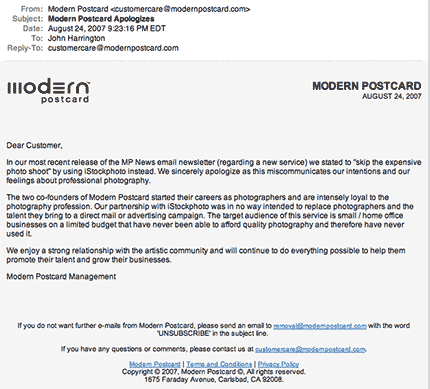
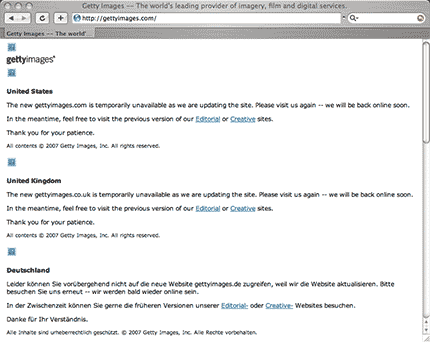
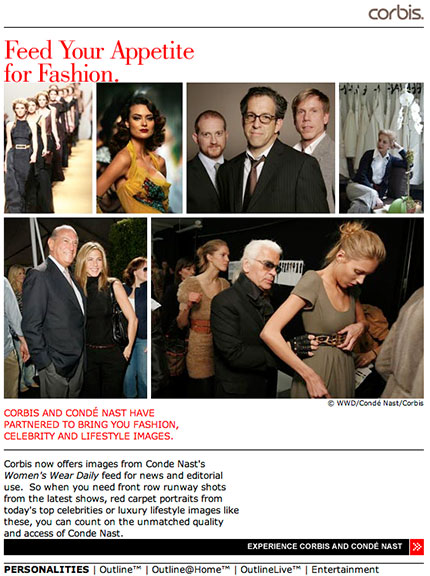
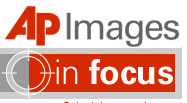 So, a colleague forwarded me a promotional e-mailing for commercial photography services, promoting a case study of their "83 locations one week" project for UPS. From the mailing:
So, a colleague forwarded me a promotional e-mailing for commercial photography services, promoting a case study of their "83 locations one week" project for UPS. From the mailing: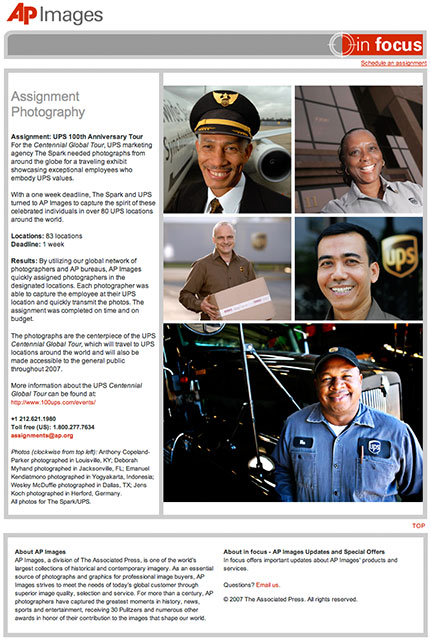
 Today's Speedlinks.
Today's Speedlinks. With Digital Railroad launching their Marketplace in beta 9 months or so ago, and entering v1.0 back in April, I thought I’d take a look at how they’re doing, based upon my own experiences, client experiences, and so on. I’ve broken down the piece into several pieces, as it’s rather lengthy.
With Digital Railroad launching their Marketplace in beta 9 months or so ago, and entering v1.0 back in April, I thought I’d take a look at how they’re doing, based upon my own experiences, client experiences, and so on. I’ve broken down the piece into several pieces, as it’s rather lengthy.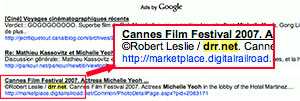

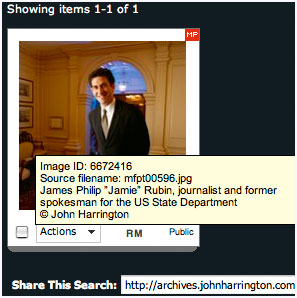 Enter Stephanie. One of DRR’s sales team members. It was 9:12 am east coast time a while back, and an e-mail hit my inbox from her looking for a variation on the image that I had shot for a magazine cover of Jamie Rubin (the one image I had was the one at left), at the time, the spokesman for the Department of State. Who knows what he’s up to now, but apparently, a newspaper in the United Kingdom was interested in what I had, and if I had any more. According to the email from Stephanie, the client “…is really after something more casual / less posed, do you have any other more casual shots…”. Sadly, I had two things working against me – 1) I did not have any casual shots, as it was a very time limited cover shoot, and this was all I had, and 2) the UK was on a tight deadline, and to make matters worse, I was on the west coast packing the family into a minivan for a trek up I-5 enroute middle-Oregon during my vacation. By the time I had called Stephanie to close the loop and tell her that I didn’t have more imagery I could upload, the deadline had passed without a sale. Yet, the effort she made while I was sleeping on the west coast at 6:12 am, was most appreciative, knowing further that at about 4am my local time, someone in the UK was perusing my archive and considering licensing my work while I slept. Nice.
Enter Stephanie. One of DRR’s sales team members. It was 9:12 am east coast time a while back, and an e-mail hit my inbox from her looking for a variation on the image that I had shot for a magazine cover of Jamie Rubin (the one image I had was the one at left), at the time, the spokesman for the Department of State. Who knows what he’s up to now, but apparently, a newspaper in the United Kingdom was interested in what I had, and if I had any more. According to the email from Stephanie, the client “…is really after something more casual / less posed, do you have any other more casual shots…”. Sadly, I had two things working against me – 1) I did not have any casual shots, as it was a very time limited cover shoot, and this was all I had, and 2) the UK was on a tight deadline, and to make matters worse, I was on the west coast packing the family into a minivan for a trek up I-5 enroute middle-Oregon during my vacation. By the time I had called Stephanie to close the loop and tell her that I didn’t have more imagery I could upload, the deadline had passed without a sale. Yet, the effort she made while I was sleeping on the west coast at 6:12 am, was most appreciative, knowing further that at about 4am my local time, someone in the UK was perusing my archive and considering licensing my work while I slept. Nice. In addition, here's examples of the images from Marketplace turning up online, here's Clairy Moustafellou's RR credit, for one.
In addition, here's examples of the images from Marketplace turning up online, here's Clairy Moustafellou's RR credit, for one. Another is Michele Westmorland's underwater image of a young boy, as the DRR credit is shown here.
Another is Michele Westmorland's underwater image of a young boy, as the DRR credit is shown here. 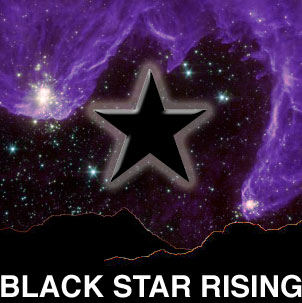 I have great respect for my colleague Jim Pickerell. So much so that almost about a decade ago, I hired him as an expert witness. Yet, I'm going to have to disagree with his example of a microstock success -
I have great respect for my colleague Jim Pickerell. So much so that almost about a decade ago, I hired him as an expert witness. Yet, I'm going to have to disagree with his example of a microstock success - 